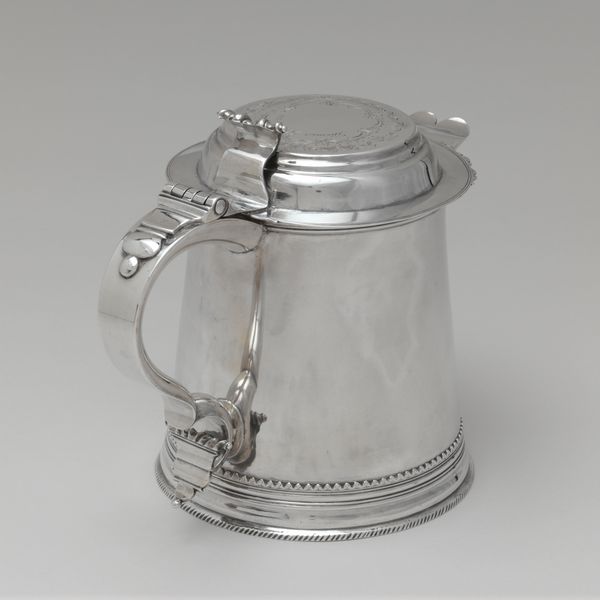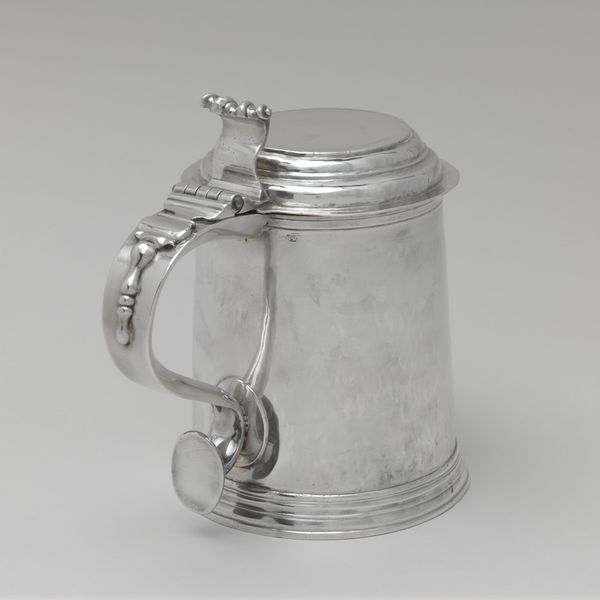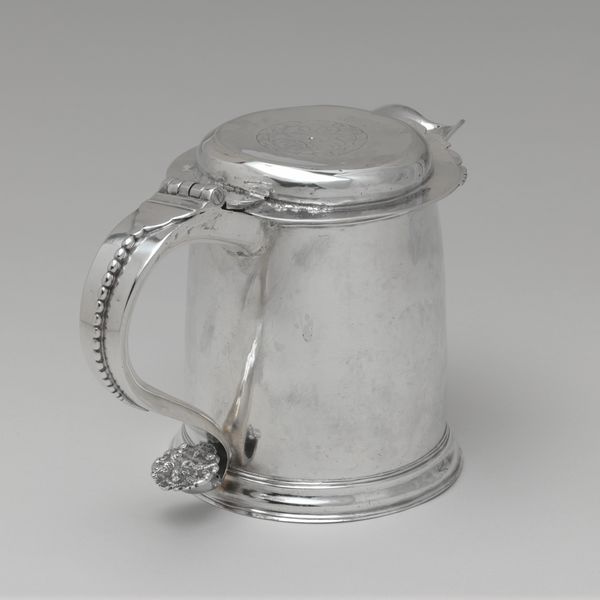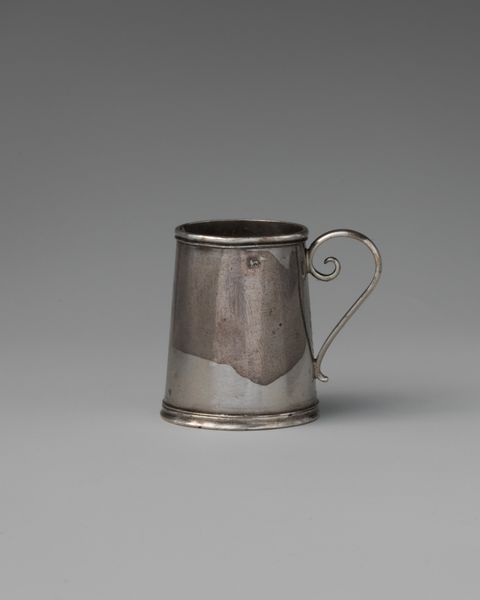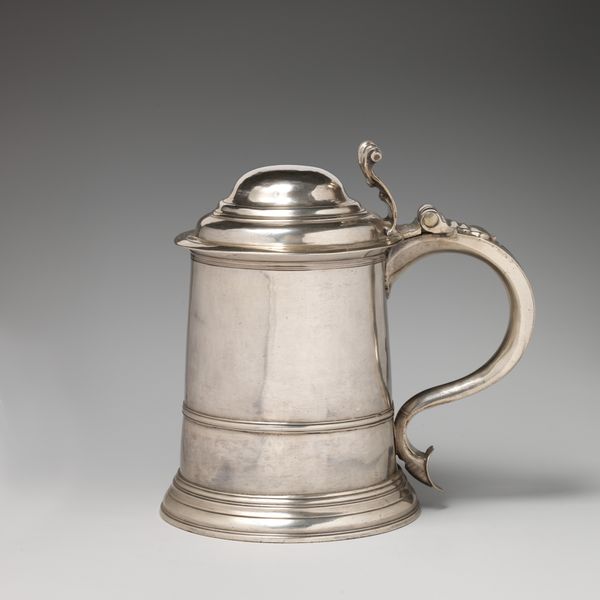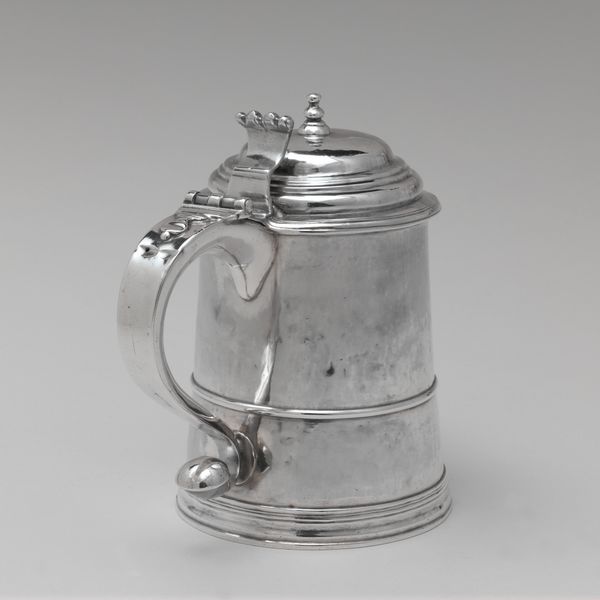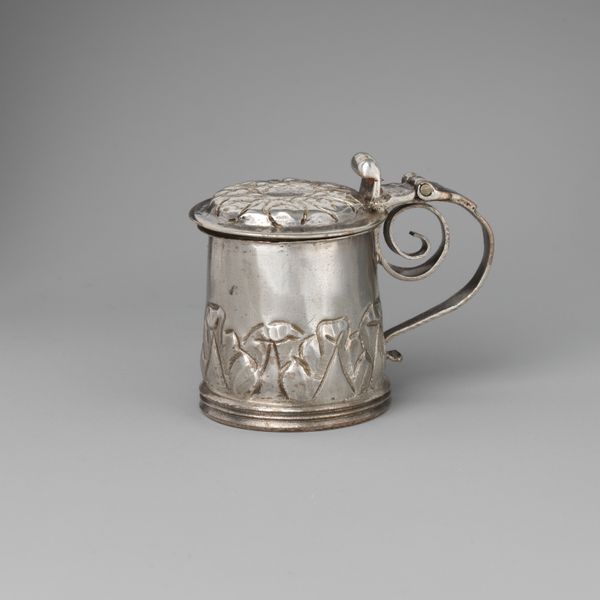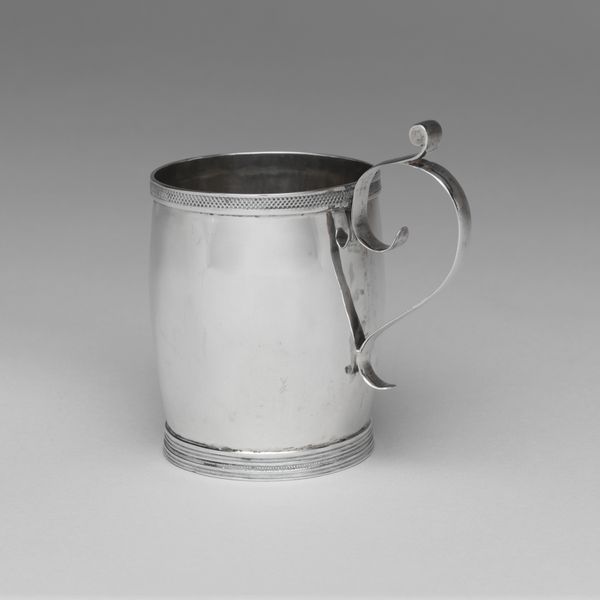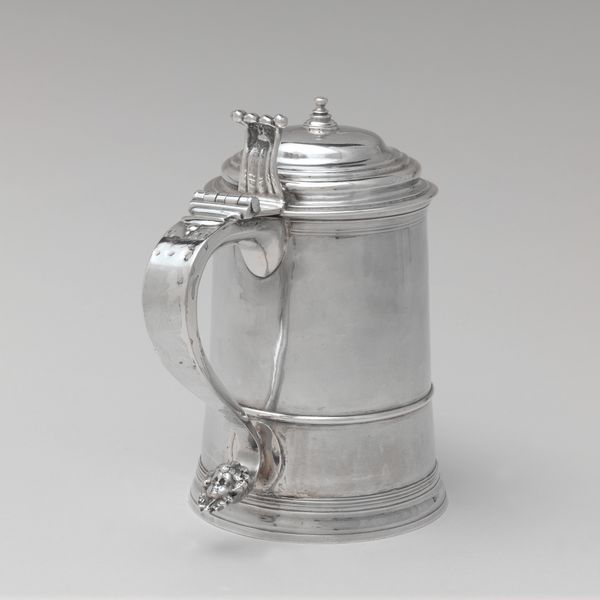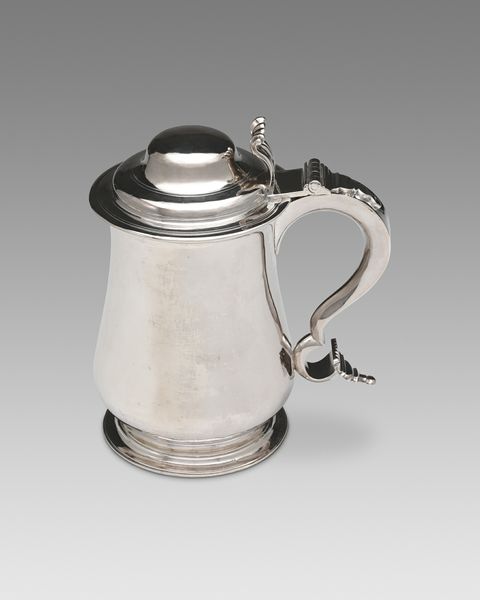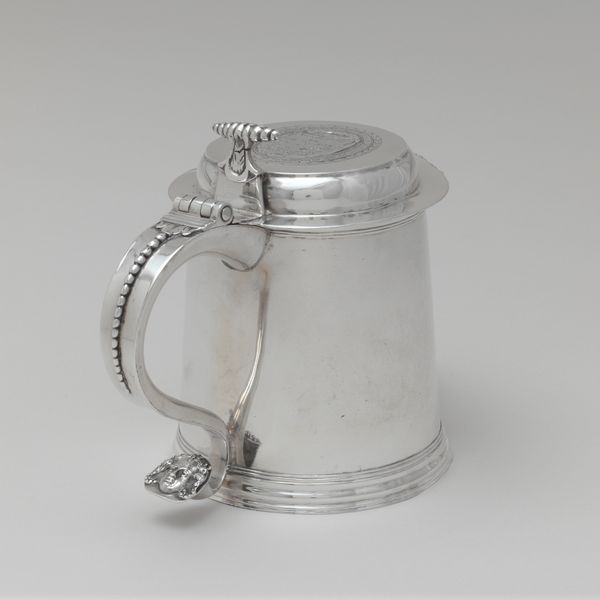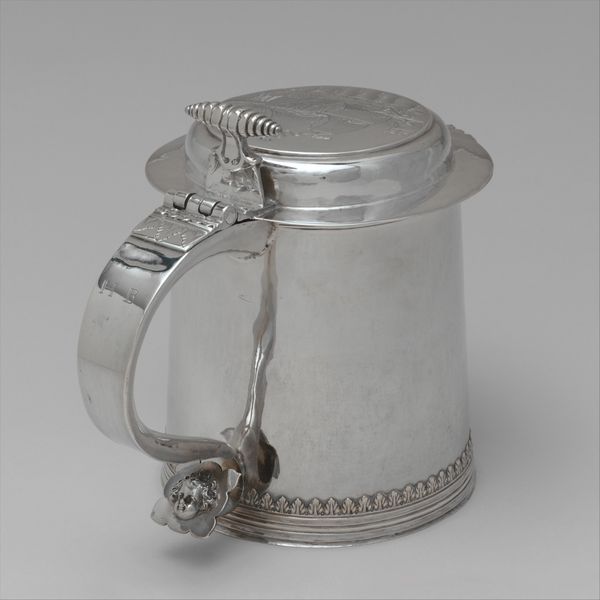
silver, metal, sculpture
#
silver
#
baroque
#
metal
#
sculpture
#
decorative-art
Dimensions: Overall: 1 1/2 × 1 in. (3.8 × 2.5 cm)
Copyright: Public Domain
Editor: Here we have a miniature tankard made of silver by George Manjoy, around 1688 or 1689. It’s currently housed at the Met. It’s so tiny! I wonder, what's significant about the materiality of such a piece? Curator: Think about silver itself – where did Manjoy get it? Was it mined locally, or was it imported through extensive trade networks? This seemingly simple object speaks volumes about the economy and global connections of the late 17th century. And what can you tell me about its making? Editor: Well, it looks pretty polished. I guess that takes time and effort, indicating specialized labor…perhaps a silversmith's workshop? Curator: Precisely! This wasn't mass-produced, each mark suggests skilled handcraftsmanship. Consider how that impacts its value – both monetary and social. And think about who might have owned this. Was it for a wealthy individual? Editor: Possibly a child of a noble family, it does strike me as an object for show rather than practical use… almost like a toy or status symbol for miniature games. It must have had to be preserved with great care. Curator: Excellent point. Its precious metal would have to be conserved in very precise settings, but think about the social message; by meticulously producing and carefully storing away this item the commissioner must have wanted to convey the idea of high value placed on it as property and treasure. These objects show a different way that we perceive labour through craftsmanship versus through an industrial production chain, especially as they're perceived today in museum settings. What else do you notice? Editor: Now that I'm looking, it reminds me how much the handle sticks out! It adds that sense of precious handling you’ve mentioned before. That helps the vessel act as a functional and artistic representation, all the way from its making process up to how we study it as audience members today. Curator: Absolutely, understanding its social and material life unlocks richer meaning.
Comments
No comments
Be the first to comment and join the conversation on the ultimate creative platform.
